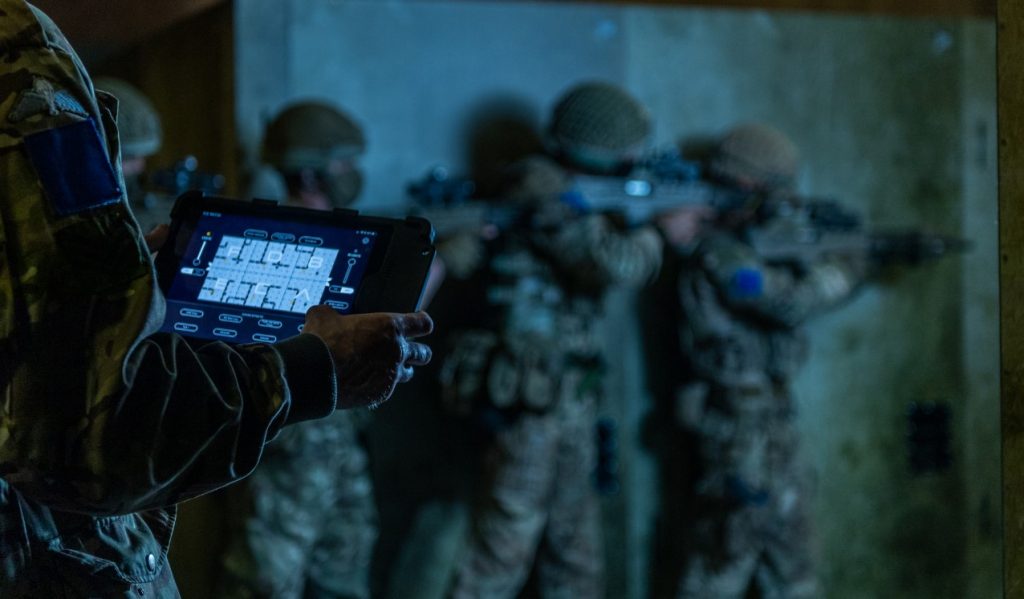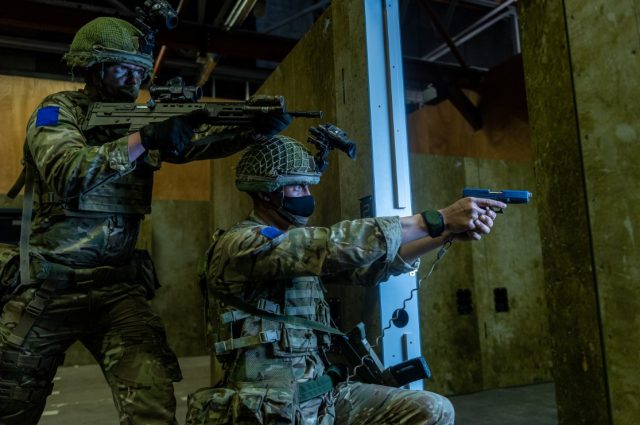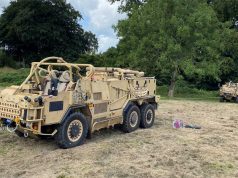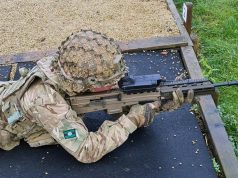UK paratroopers are testing out a new facility that has been built at Colchester’s Merville Barracks to train them for the demands of the urban battlefield.
The urban training facility boasts moveable walls; interactive smoke, light, and sound effects; and a video monitoring system for soldiers to be able to review their performance.
It is designed to let troops, armed with rifles adapted to use paint marker ammunition, practice entering and moving through buildings, clearing the enemy as they go. These skills are the starting point for being able to operate in the complex and cluttered surroundings of towns and cities.
The UTF has been developed in recognition that the world’s population is increasingly living and working in built-up areas. In their role as the British Army’s global response force, the soldiers of 16 Air Assault Brigade need to be prepared to fight in challenging urban surroundings. Buildings can be easily fortified and defended by a small number of troops, while the presence of civilians restricts the use of firepower.

The paratroopers of C (Bruneval) Company, 2nd Battalion The Parachute Regiment have been training in the UTF for the first time last week (1-5 Feb). The ability to change layouts, light levels and the soundscape has let troops train in simulations of a Middle Eastern shopping center at night or an African jungle village in a heavy rainstorm.
“We’ve invested in this innovative facility to give our soldiers the best training possible for the urban battlefield. It allows soldiers to really focus on getting their skills and drills right, starting simply and then adding complexity through the built-in effects system,” Colonel Martyn Wills, Deputy Commander of 16 Air Assault Brigade, said.
“These effects make training a more immersive experience, adding extra pressure to what the soldiers are doing. We can then take the skills that have been perfected here into more challenging training in the villages built on the Army’s training areas, adding the scale of larger units operating together.”



























